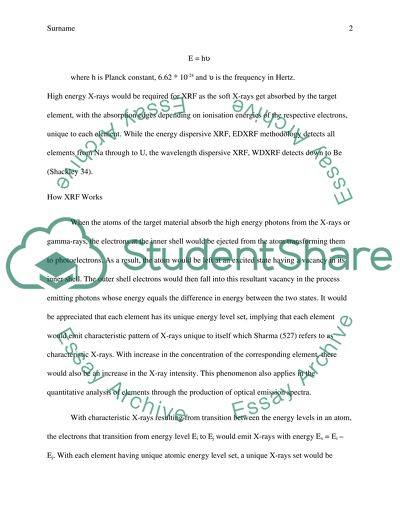Cite this document
(“X-ray Fluorescence Essay Example | Topics and Well Written Essays - 1500 words”, n.d.)
X-ray Fluorescence Essay Example | Topics and Well Written Essays - 1500 words. Retrieved from https://studentshare.org/physics/1471909-x-ray-fluorescence
X-ray Fluorescence Essay Example | Topics and Well Written Essays - 1500 words. Retrieved from https://studentshare.org/physics/1471909-x-ray-fluorescence
(X-Ray Fluorescence Essay Example | Topics and Well Written Essays - 1500 Words)
X-Ray Fluorescence Essay Example | Topics and Well Written Essays - 1500 Words. https://studentshare.org/physics/1471909-x-ray-fluorescence.
X-Ray Fluorescence Essay Example | Topics and Well Written Essays - 1500 Words. https://studentshare.org/physics/1471909-x-ray-fluorescence.
“X-Ray Fluorescence Essay Example | Topics and Well Written Essays - 1500 Words”, n.d. https://studentshare.org/physics/1471909-x-ray-fluorescence.


